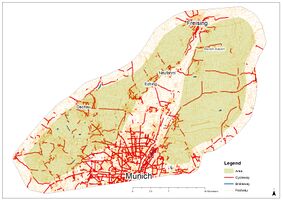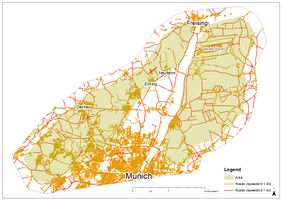WAVE Team 2 Freising 2021: Difference between revisions
Luke.miller (talk | contribs) |
Luke.miller (talk | contribs) |
||
| Line 177: | Line 177: | ||
File:Scenario brainstorming.jpg|thumb|In this graphic we utilised the Narrative scenario template to brainstorm key points that we wanted to expressive in the graphics of the visualizations | File:Scenario brainstorming.jpg|thumb|In this graphic we utilised the Narrative scenario template to brainstorm key points that we wanted to expressive in the graphics of the visualizations | ||
File:Scenario- alternative futures.jpg|thumb|This graphic shows the possible alternative futures of peatlands in an artistic exploration - where extreme cases of Naturalized to Urbanized landscapes and protected to neglected landscapes are explored in context of peatlands | File:Scenario- alternative futures.jpg|thumb|This graphic shows the possible alternative futures of peatlands in an artistic exploration - where extreme cases of Naturalized to Urbanized landscapes and protected to neglected landscapes are explored in context of peatlands | ||
= Collaborative Goal Setting = | = Collaborative Goal Setting = | ||
Revision as of 11:46, 14 May 2021
>>>back to working groups overview
Rationale
Peatlands in general are an important living space for humans and nature. Also the peatlands near Freising have a high importance for the population in a cultural and an ecological sense, which means it is delivering important ecosystem services. A possible challenge, this landscape is facing is the land-use change which happened in the past and is still happening.
Location and scope
You can edit this map with the map editor
Water as a natural system
Geomorphology, typologies and dynamics of water areas
- Describe the water areas of your area in the contxt of the wider water system
- How does water appear in the landscape of your living lab? What types of water areas are common?
- Please identify the water bodies' catchment areas, tributaries and floodplains
- Which dynamics do these water areas have?
- Have there been any flood events in the past?
- add 2-3 graphical representations to the image gallery, you can add more if you like
- Yourcase watersystem1.jpg
add a caption
- Yourcase watersystem2.jpg
add a caption
- Yourcase watersystem3.jpg
add a caption
Water as a living space
In former times, the peatlands have been a habitat for special plant and animal species, like birds, insects, or amphibians. Nowadays it is cut by settlements, roads, and the Munich Airport, some parts are used for agriculture. Just patches of natural habitats have survived, like the ‘Streu- und Feuchtwiesen’ or the ‘lichten Moorwälder’ in the areas of the Verein Dachauer Moos e.V. Here, highly protected plant species, like Iris sibirica (lily) or Scorpidium (moss) can be found, which makes these habitats really special. Even in ditches and streams special Flora and Fauna can be found. Some of these areas part of the NATURA2000 Programme and therefore protected by European law. Furthermore, a lot of lakes and rivers can be found here, some with special flora and fauna as well.
The water quality of this area is depending on the quality of the groundwater. Some areas are drinking water areas with sufficient water quality to use it for human consumption. In other parts, intensive agricultural or urban land-use is lowering the water quality.
Blue and Green Infrastructure
- What are the major potential elements of a green/blue infrastructure network? Are these likely to change/disappear? Why is that?
- You find my background material on green infrastructure in our reading list
- add 1-2 graphical representations to the image gallery, you can add more if you like
- Your case green blue infrastructure1.jpg
add a caption
- Your case green blue infrastructure2.jpg
add a caption
Water as a cultural space
Land use and water
In an early stage, especially the Dachauer Moos, was a waste Landscape, home of murderers and thieves, who got no where else to go.
Later, more and more people came to the peatlands to cultivate them and use it for peat extraction (e.g. used as heat material) and agriculture. Therefore, the peatland was drained, which also changed the soil characteristics, leading to Greenhouse gas emissions from the soil. In this time more and more painters came to the peatlands, to paint the beautiful landscape. Meanwhile, the urbanization of the landscape was intensified.
Today, this landscape is highly urbanized and in agricultural use with small patches of natural areas.
It is very likely that the human use of the landscape is intensified, because of driving forces like the need of living space or agricultural land for humans. Drivers in the opposite direction are the identification with the peatlands as a ‘Home landscape’ and need of the population for recreation.
Draining the landsdcape, and therefore intensifiing the land-use has an impact on the storage of carbon in the peatland soil. When draining peat, the carbon is released in a form of greenhouse gas emissions and is distributing significantly to climate change. The process is explained here in a simple way: While the upbuilding of the peatlands, plants use CO2 for photosynthesis. In this process, the plants store the CO2 as organic matter and die. Due to the high water table, this organic material is decomposed slower than its build up and can be stored. If the proportion of organic substance exceeds 30%, it is called peat. If this peat is drained, the organic matter is decomposed faster than it is build up and the carbon is released as greenhouse gases, e.g., CO2.
Cultural and spatial typologies of water areas
- Which spatial patterns have evolved in relation to your water areas?
- What is the role of water areas within the overall urban morphology? (approx 200 signs)
- add 1-2 graphical representations to the image gallery, you can add more if you like
- Yourcase water space2.jpg
add a caption
- Yourcase water space3.jpg
add a caption
Sacred spaces and heritage
- Which places/elements hold cultural value and to whom?
- You may add a map and some images, please also explain in your caption why these elements are valuable
- Your case sacredspace1.jpg
add a caption
- Your case sacredspace2.jpg
add a caption
- Your case sacredspace3.jpg
add a caption
Visual appearance and landscape narrative
- Which elements are essential for the landscape character?
- Has the landscape been painted or otherwise depicted, when and whom? Which elements are essential?
- Which narratives exist? Who has written about this landscape or depicted it in some way?
- You can add text and images
- Your case character1.jpg
add a caption
- Your case character2.jpg
add a caption
- Your case character3.jpg
add a caption
Water and People
[[]]
Accessibility and usability
It is possible to enter the landscape everywhere, it is accessible by roads and paths for cars, bikes and by foot. Most of the areas are used by farmers to produce agricultural products, some are also keeping animals like cows or horses. The more natural areas are used by the surrounding population for recreation by taking walks, walking your dog or swimming in lakes. Some people are protecting and renaturing areas, they use it as a identification with their living spaces.
- Yourcase usepatterns.jpg
add a caption
Community Mapping
What is to be mapped here?
- Social groups from within the community, for example the youth, kids, students, parents, the retired etc. Typically, these groups have specific needs, which you can also make explicit on the map. These people might not be organized in any way, but they are usually present in the context you are observing
- Local stakeholder groups: these groups are organized in one or the other way. They only exist within the community context you are observing. For example: the local community center, local churches, local interest groups, the landowners, small businesses and retailers
- External stakeholder groups are not necessarily present in the environment you are observing, but they may have strong stakes and interests. These can be local authorities, politicians, associations, care services etc.
- For each group, you may identify their needs, objectives, power and capacities
- You may also identify gaps and power conflicts
- Please try to redepict these elements in an integrated way and in relation to your water landscape. What is the relationship between these groups? Are they close or distanced from each other? Who is more powerful? Which voices are hardly heard? Do they have any shared concerns?
- Your case your community map1.jpg
add a caption
- Your case your community map2.jpg
add a caption
- Your case your community map3.jpg
add a caption
Possible Futures
In our systems analysis of the Peatlandscape we have identified 4 main Sustainability goals that are at risk: (12)Responsible Consumption and Production - as agriculture is in sharp contrast with these peatlands, it is paramount that sustainable agricultural methods be used in harmony with peatlands (13)As Peatlands are indispensable against the fight against climate change, as an essential carbon store habitat and they have been drained in many parts of our focus area (14)Peatlands are comprised of important habitats for aquatic species that are jeopardized when peatlands are destroyed (15)A peatland is a landscape that encompasses the realms of both water and landscapes and is there an important landscape to protect
The worst-case scenario describes a landscape that has been entirely exploited where peatlands no longer exist. The concrete cubes represent the urban landscape that continues unabated, further fragmenting and utilising the landuse. The maize crops represent conventional agricultural practices where peatlands are drained for the use of conventional agriculture.
The best-case scenario is a landscape where humans farm in harmony with peatlands, where science is used to continue the careful monitoring of peatlands and the ultimate protection of their existence - by maintaining the water table within the landscape
- = Collaborative Goal Setting =
- *''Define strategic planning objectives based on the evaluation findings from your analysis''
- *''Ideally, involve the community of your living labs into this process
- * ''150 words text contribution''
- = Spatial Strategy and Transect =
- *''translate your strategic goals into a vision''
- *''develop a spatial translation of your vision''
- *''exemplify your vision in the form of a transect with concrete interventions''
- *''add map(s) and visualizations''
- Your case spatial translaton vision.jpg
add caption here
- Your case transect.jpg
add caption here
- Your case transect detail1.jpg
add caption here
- Your case transect detail2.jpg
add caption here
From Theory of Change to Implementation
- For implementing your vision: Which partnerships are needed? Which governance model is required?
- Who needs to act and how? Draw and explain a change/process model/timeline
- Which resources are needed? On which assets can you build?
- add 150 words text and visuals
References
- give a full list of the references you have used for your case
Process Reflection
- Reflect in your intercultural and interdisciplinary team on the outcomes of your study
- Which limitations were you facing?
- What have you learnt from each other?
- What did you learn in the Living Labs?
- What would you do differently next time?
- You can also use diagrams/visuals
- 250 words text














